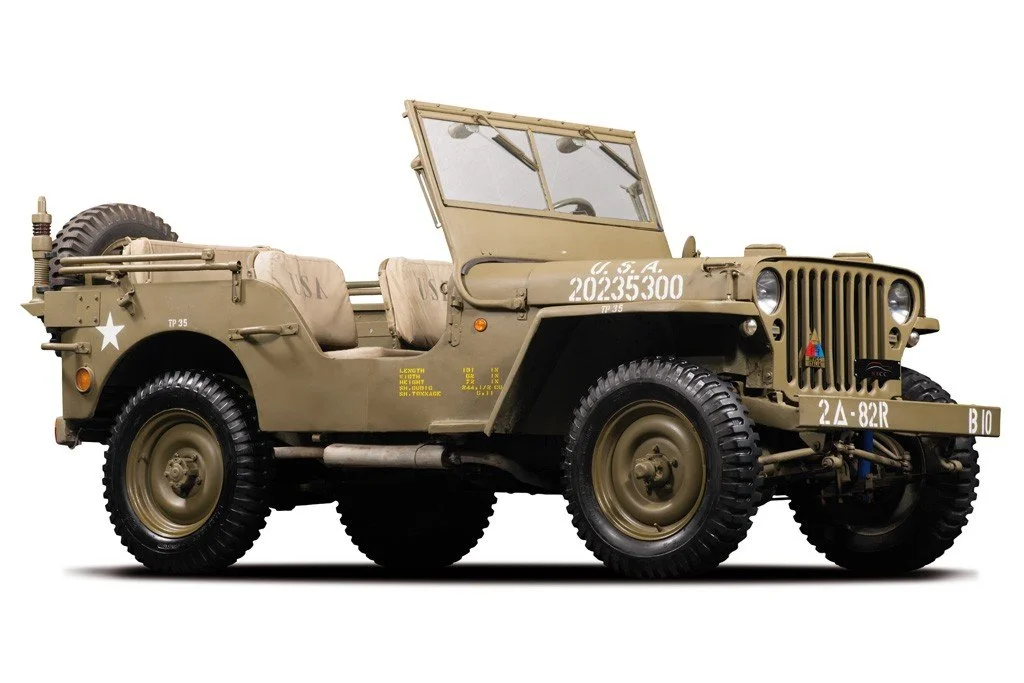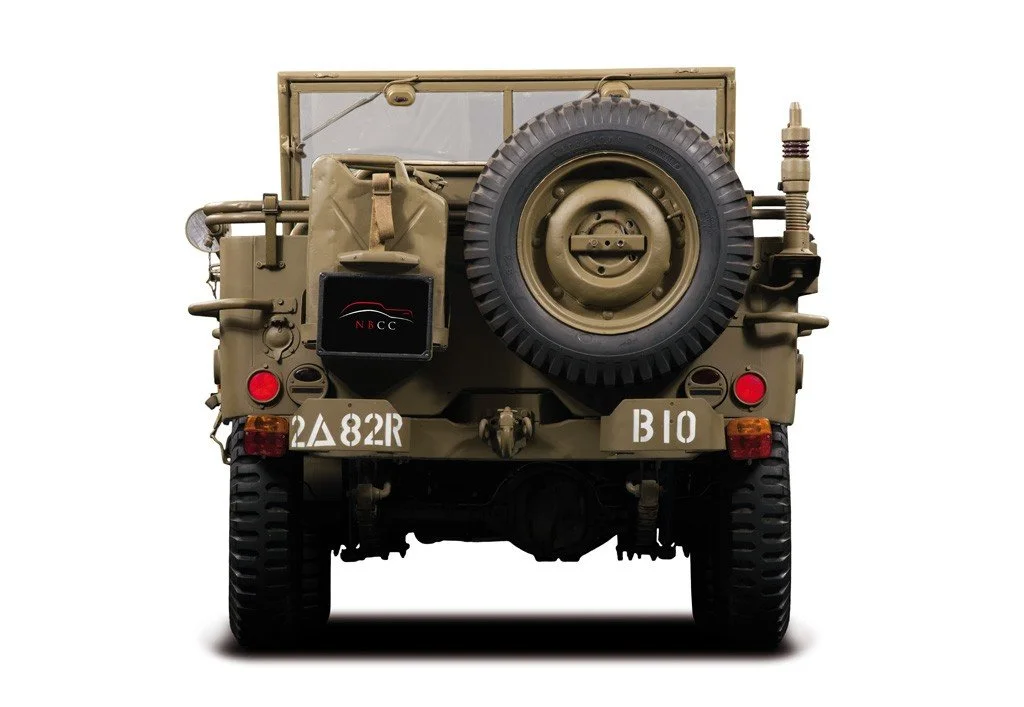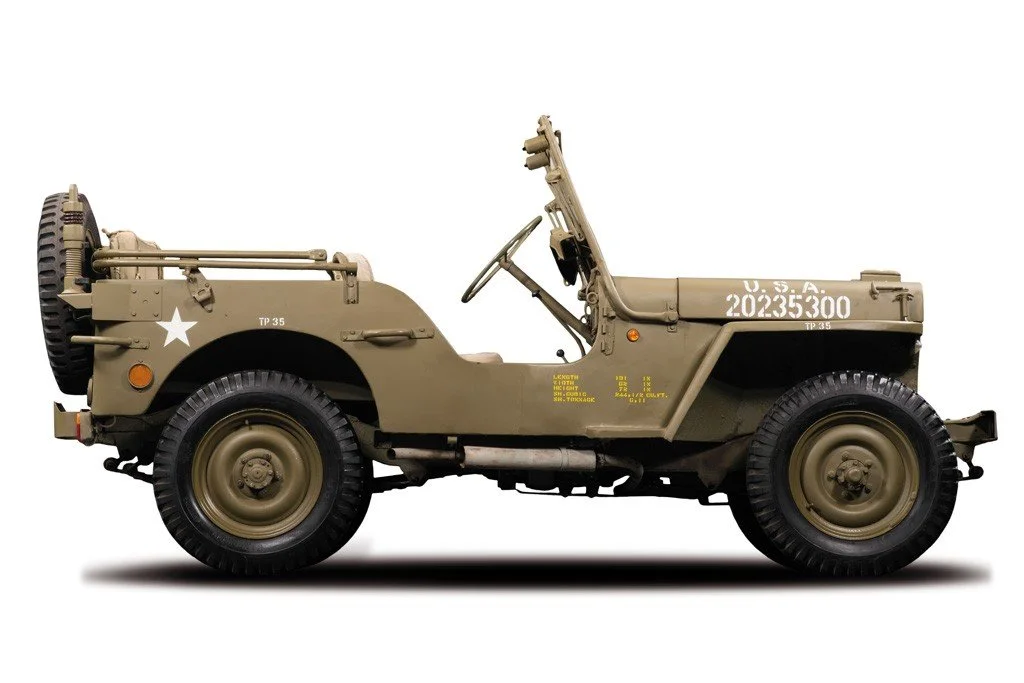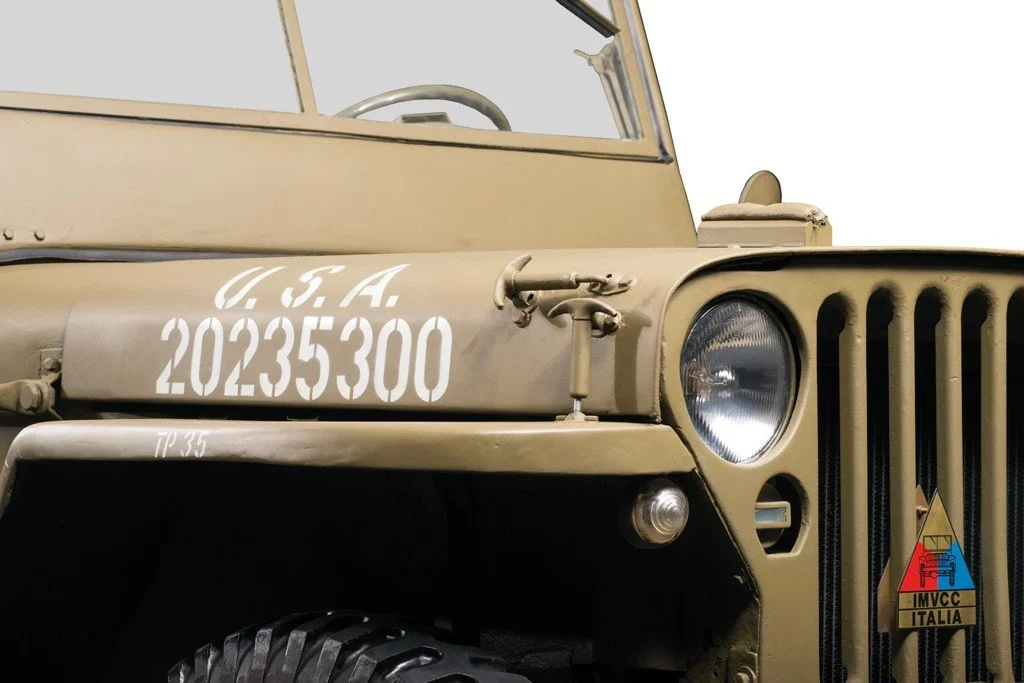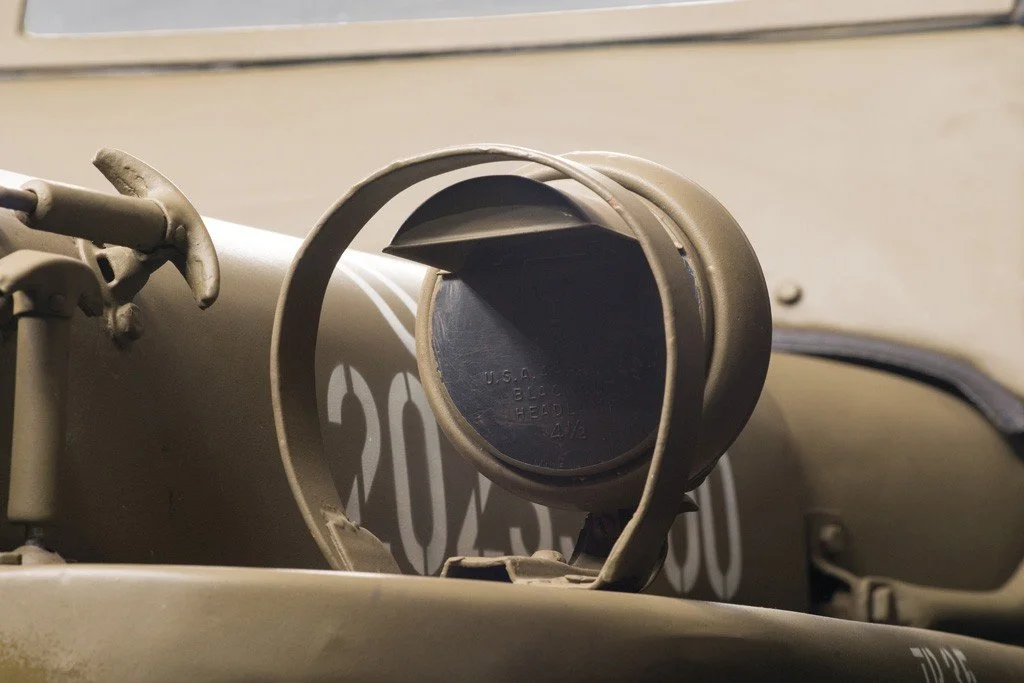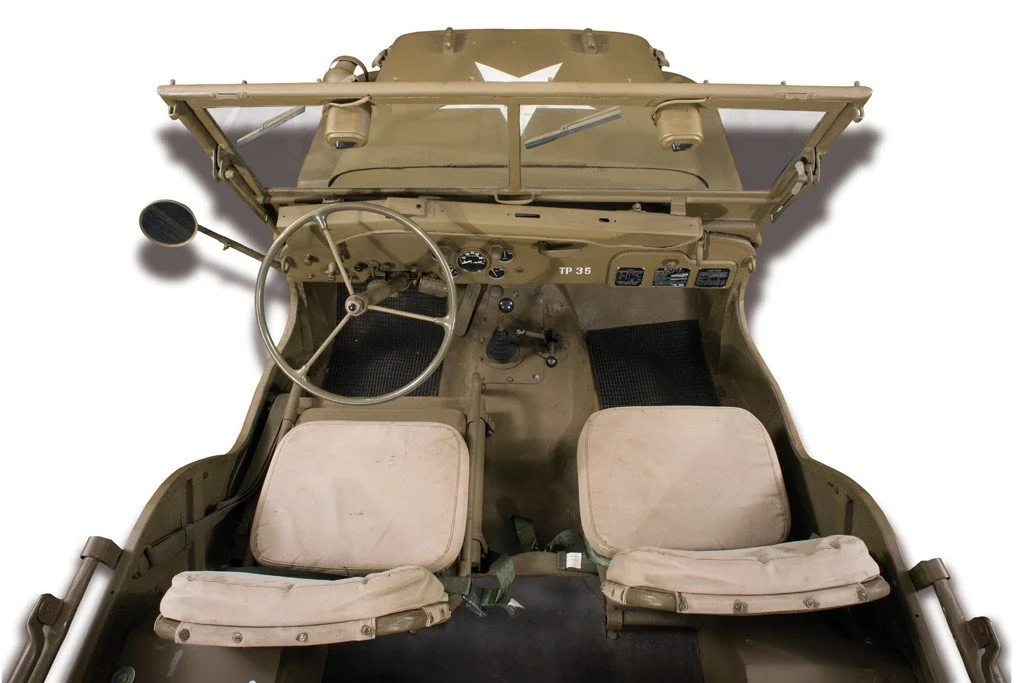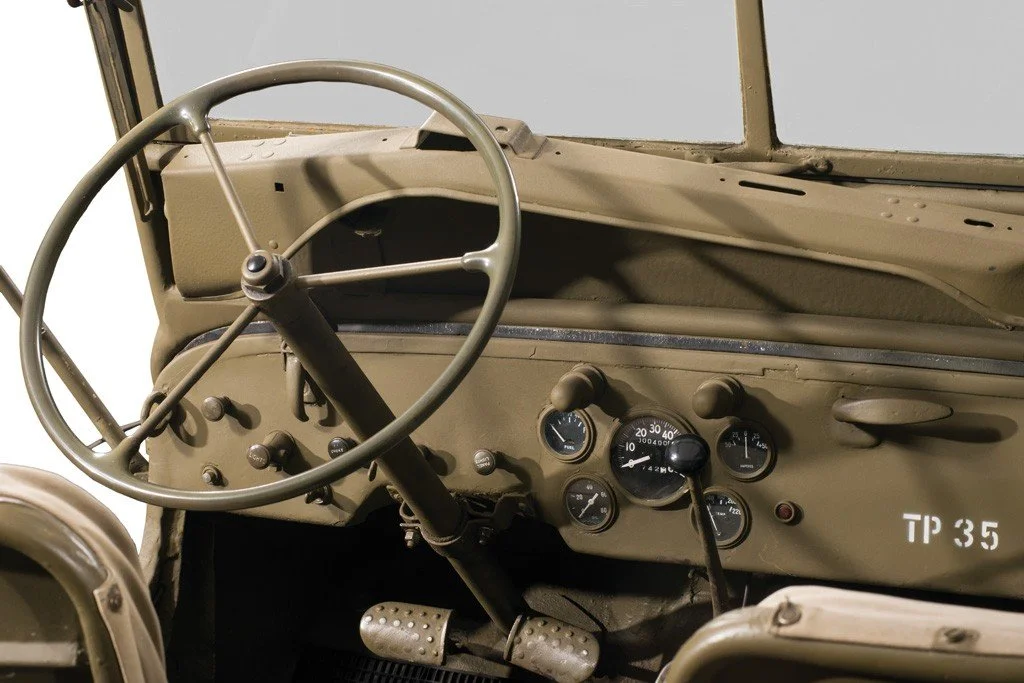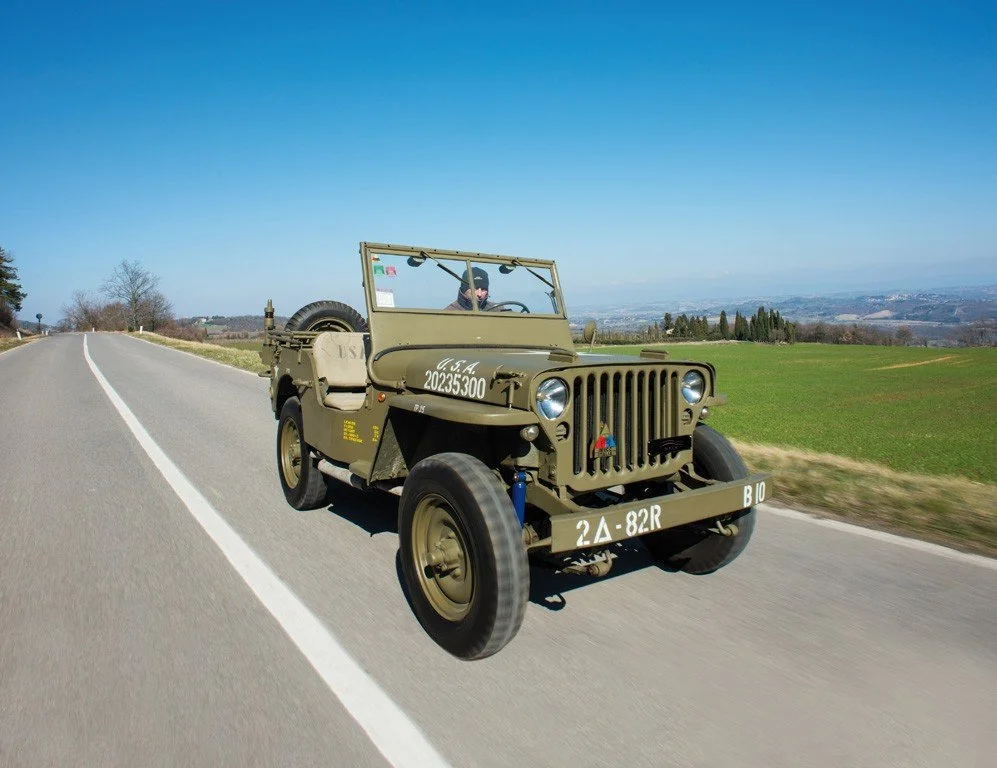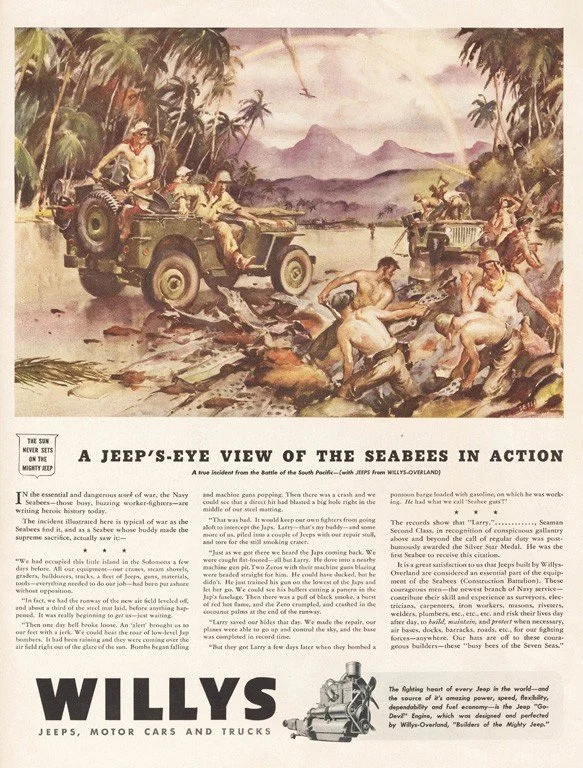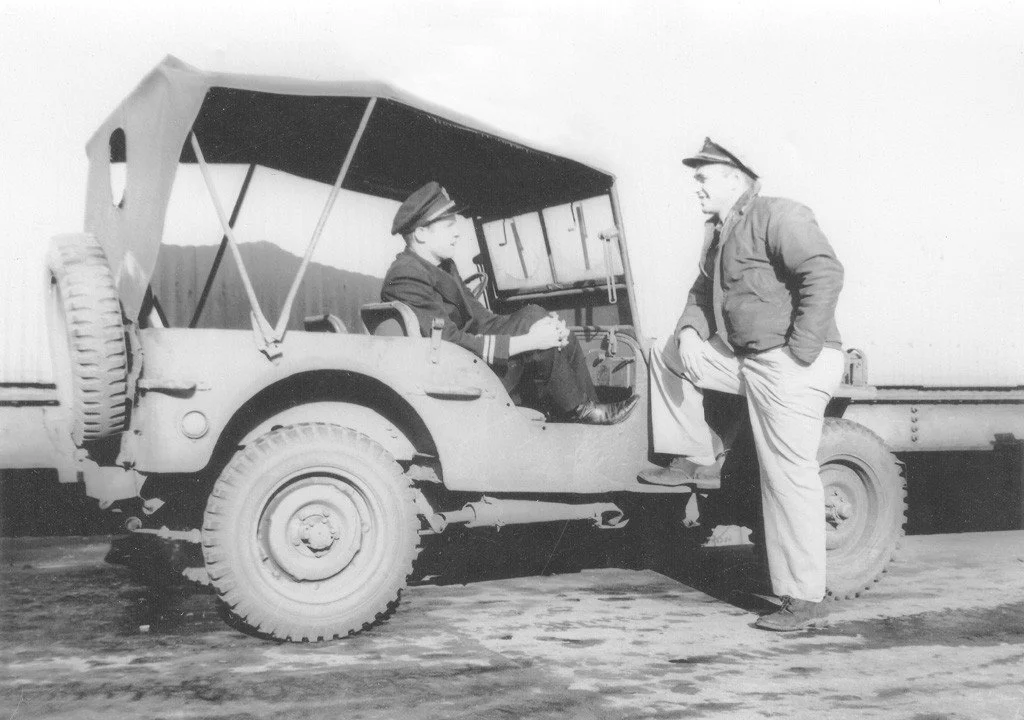-
The fleet of Willys MBs, more commonly known as Jeeps, made an extremely important contribution to the American victory in the Second World War. It had a straightforward and robust 2.2 liter four cylinder inline engine, nicknamed “Go Devil”, with 55 hp but able to tackle any difficult route with ease. Equipped with a 15 gallon fuel tank, it did not exceed 50 mph.
This is a 1944 model and joined the Nicola Bulgari Collection in February 2006. It was immediately given a professional restoration by the Italian specialist Antonino Conticello, and was back on the road in 2007 representing its era in Italy. The major part of the restoration involved the body, engine and transmission. While still keeping its first original Italian license plate (civil), the US army printing with the military department code of the era has been meticulously reproduced. A true icon of the war years. -
Company
MBWheelbase
80inInterior trim
Army GreenBrakes
front and rear drumsMake
WillysLength
131inEngine
Go Devil L4 - 134cidTires
5.50x16Model
Willys OverlandWidth
62inCarburetor
1 Carter WO-539S one-barrelOriginal Price
$649Body style
open chassisWeight
2454lbsHorsepower
54.8hp @ 5000rpmProduction
363,000Model year
1944Exterior paint
Army GreenTransmission
manual 3-Speed with 2-Speed Transfer Case -
On July 11, 1940, with World War II drawing near, the US Army approached 135 U.S. automotive manufacturers to submit designs to replace its existing, aging light motor vehicles; mostly motorcycles, sidecars, and some Ford Model Ts. The companies' bids were to be received just eleven days later, then they had 49 days to submit their first prototype and 75 days for completion of 70 required test vehicles; 130 days in all to design and deliver the vehicles.
The Army's specifications were equally demanding: a general purpose personnel or cargo carrier particularly adaptable for reconnaissance or command; designated as 1/4-ton four-wheel drive Truck, crew of three, wheelbase of no more than 75 (later 80) inches, tracks no more than 47 inches, down windshield, 660 lb payload, and powered by an engine capable of 85 ft-lb (115 Nm) of torque. The most daunting demand, however, was that it have an empty weight of no more than 1300 lbs (590 kg). Only three companies entered: American Bantam Car Company, Willys-Overland Motors, and the Ford Motor Company. Though Willys-Overland was the low bidder, Bantam received the bid, being the only company committing to deliver a pilot model in 49 days and production examples in 75 days. Since Bantam did not have the production capacity to deliver on the scale needed by the War Department, the two losing bidders, Ford and Willys, were encouraged to complete their own pilot models for testing. As testing of the Bantam prototype took place, Ford and Willys technical representatives were given ample opportunity to study the vehicle's performance. Moreover, the War Department forwarded the Bantam blueprints to Ford and Willys, claiming the government owned the design.
By November 1940 Ford and Willys each submitted prototypes to compete with Bantam. The two pilot models, the Willys Quad and the Ford Pygmy, turned out to be very similar to each other and were joined in testing by Bantam's entry, now called the Bantam Reconnaissance Car 60 (BRC 60). US armed forces were already under such pressure that all three cars were declared acceptable and orders for 1500 units per company were given. It was also acknowledged at this time the original weight limit (which Bantam had ignored) was unrealistic, and it was raised to 2160 lbs (980 kg). For these respective initial production runs, each vehicle received revisions and a new name. Bantam's became the BRC 40 (and the company ceased motor vehicle production after the last one was built in December 1941). After losing 240 lbs, Willys' changed the designation to "MA": "Military" model "A". The Fords were designated “GP”: “G” for "Government” and “P” was Ford's code for passenger cars with 80-inch wheelbases.
By July 1941, the War Department wanted to standardize, and selected a single manufacturer to supply them with the next order for another 16,000 vehicles. Willys won the contract, mostly due to its more powerful engine and lower cost. Whatever better design features the Bantam and Ford entries had were incorporated into the Willys car at this time, causing the Willys “A” designation to become “B” and thus the vehicles were tagged “MB”.
During World War II, Willys produced 363,000 Jeeps.

